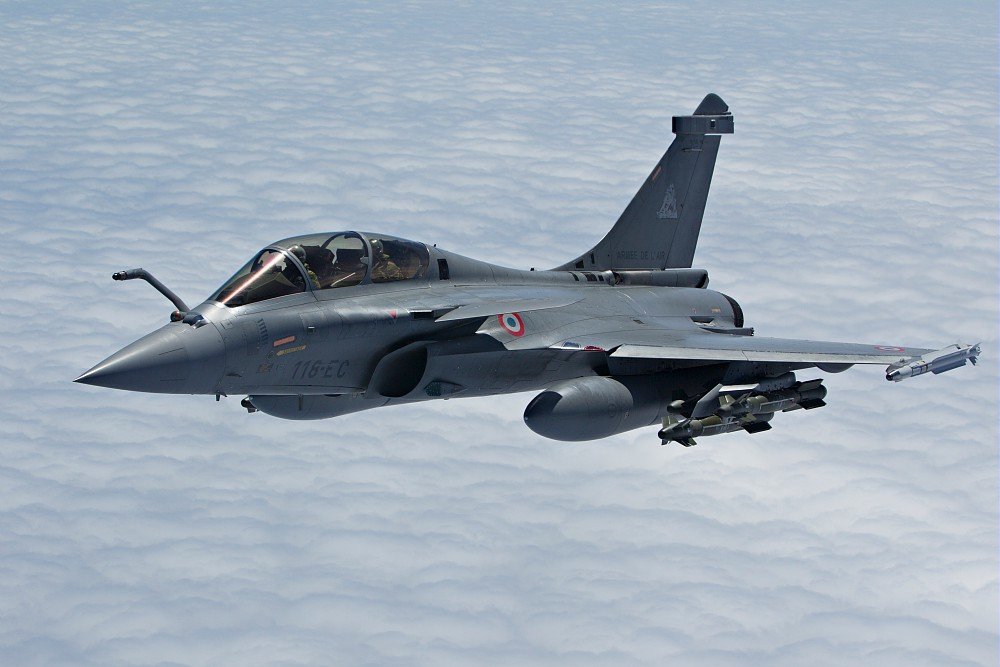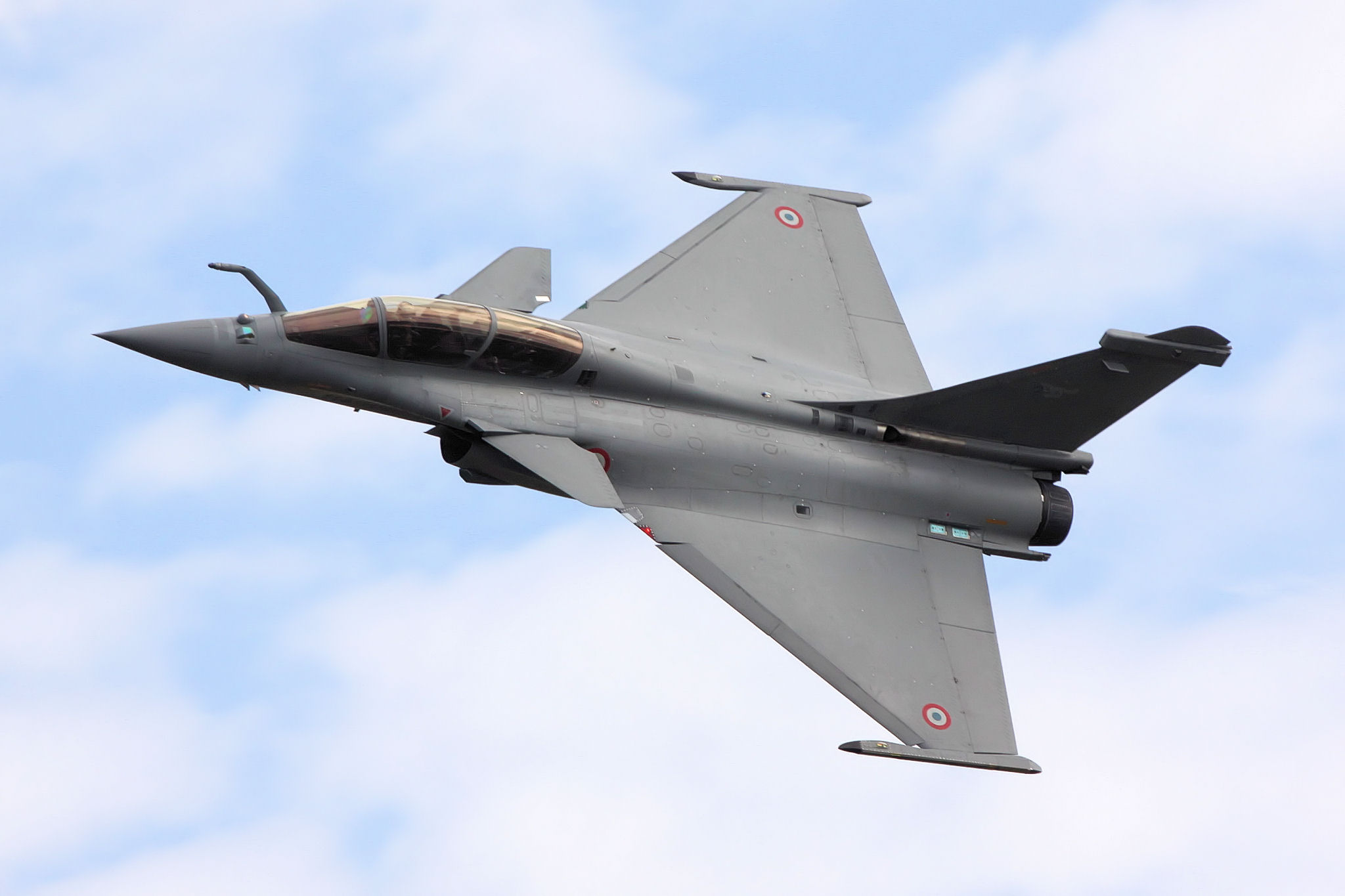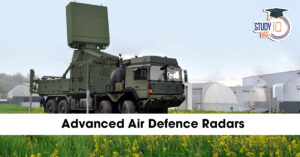Table of Contents
Rafale is a twin-engine, multirole combat aircraft designed and produced by France’s Dassault Aviation. Versatile in nature, the Rafale has a strong ability in air superiority, ground strike, reconnaissance, and nuclear deterrence operations. The Rafale Fighter Jets, with state-of-the-art avionics and an impressive inventory of armaments, have the capability to carry out both air-to-air and air-to-ground operations concurrently.
Rafale Fighter Jets
In 2016, India signed an agreement with France to purchase 36 Rafale fighter jets for the Indian Air Force (IAF), which will boost its combat power with new aircraft that are fitted with advanced technology. Continuing its defence buildup, India signed an agreement in April 2025 for $7.4 billion to purchase 26 Rafale Marine (Rafale M) fighter jets for the Indian Navy, 22 of which are single-seaters and 4 twin-seaters. These planes are to be deployed on the aircraft carrier INS Vikrant, with deliveries due by 2030.

Rafale Fighter Jets in Operation Sindoor
Rafale Fighter Jets were instrumental in the success of Operation Sindoor, utilising their advanced capabilities for deep strikes against terrorist targets from within Indian airspace. Rafale aircraft were said to have been used to conduct precision strikes against terrorist infrastructure deep within Pakistani territory.
Rafale Fighter Jets were equipped with sophisticated weapons such as SCALP cruise missiles and HAMMER air-to-ground precision-guided weapons. These enabled the IAF to attack targets at considerable stand-off distances without entering Pakistani airspace. The Rafale’s cutting-edge avionics, sensors, and stand-off strike capabilities made it an invaluable asset in conducting Operation Sindoor successfully and with the least risk to Indian aircraft and personnel.
Key Specifications of Rafale Fighter Jets
Check here Key Specifications of Rafale Fighter Jets in detail:
| Key Specifications | Details |
| Dimensions |
|
| Weight |
|
| Performance |
|
| Powerplant |
|
| Armament & Hardpoints |
|
| Cannon |
|
Features of Rafale Fighter Jets
| Features | Details |
| Air-to-Air Missiles |
|
| Air-to-Ground Weapons |
|
| Other Payloads |
|
India-Specific Enhancements in Rafale Fighter Jets
- Advanced radar and electronic warfare systems.
- Israeli helmet-mounted targeting systems.
- Low-band jammers.
- Infrared search and tracking sensors.
- Nuclear delivery capability of weapons.
- Integration of local weapons such as the Astra and Rudram missiles.
- Improved data and voice communications through Indian satellite networks and avionics.
- Special cold start capability for high-altitude bases.
Strategic Significance of Rafale Fighter Jets
The Dassault Rafale fighter aircraft is of vital strategic importance to India due to its high-performance characteristics and the role it plays in strengthening the nation’s air capability and overall defence standing.
Enhanced Air Superiority
- Advanced Sensors: With the cutting-edge RBE2 AA Active Electronically Scanned Array (AESA) radar and Front Sector Optronics (FSO), the Rafale is capable of detecting and tracking numerous targets at extended ranges, giving it a significant advantage in air-to-air combat.
- Beyond Visual Range (BVR) Missiles: Integration of such missiles as the Meteor provides Rafale with an edge in BVR combat, enabling it to target adversary aircraft at distances over 100 km.
- Better Kinematic Performance: Rafale’s delta wing design and powerful engines provide better manoeuvrability and high-speed performance, which are the crux of air superiority.
Precision Strike Capabilities
- Long-Range Stand-off Missiles: Rafale can deploy and deliver long-range precision-guided missiles like SCALP cruise missile and HAMMER ground-to-air missiles to penetrate hard targets in-depth from secure stand-off positions, as it demonstrated during Operation Sindoor.
- All-Weather Operations: Its advanced sensors and targeting pods allow accurate striking in any weather, further enhancing operational flexibility.
Nuclear Deterrence
- Nuclear Weapons Delivery and Carriage: The Rafale has been adapted to carry and deliver nuclear weapons, enhancing India’s nuclear triad and the survivability of its airborne nuclear deterrent.
Maritime Strike Capabilities
- Anti-Ship Missiles: Anti-ship missiles like the Exocet AM39 being integrated allow the Rafale to effectively target and incapacitate naval ships, enhancing Indian maritime security.
- Naval Variant (Rafale-M): This new acquisition strengthens the air capability of the Indian Navy by carrier-based power, adding maritime security and power projection capability in the Indian Ocean Region.
Strategic Signaling and Deterrence
- Modernisation of Air Force: The induction of the Rafale, a 4.5 generation fighter, is a strong message about India’s intent to modernise its armed forces and have an effective deterrent against potential adversaries.
- Regional Power Projection: Its long-range and multirole capability and advanced weapons enhance India’s power projection and influence within the strategic neighbourhood.
Strengthening Indo-French Strategic Partnership
- Defense Cooperation: Rafale acquisition has been a key part of India-France’s strategic alliance, with greater cooperation in defence and aerospace technologies.
- Future Collaborative Opportunities: It opens up possibilities for co-development and co-production of cutting-edge defence technologies between the two nations.
Operational Flexibility and Versatility
Omnirole Capability: The Rafale is a true “omnirole” fighter, capable of performing a wide variety of tasks, including air-to-air, ground attack, reconnaissance, electronic warfare, and nuclear strike, in the course of a single flight. This obviates the need for several specialised aircraft.
Conclusion
In conclusion, the Rafale fighter aircraft greatly augments India’s military strength in various spheres. Their cutting-edge technology, powerful weapons, and adaptability offer a vital strategic edge, bolstering national security and regional stability.
For India, the Rafale acquisition has been a significant milestone in rejuvenating its air fleet and strengthening its overall defence posture. It creates an effective deterrent, increases regional power projection, and strengthens strategic relationships, particularly with France. The demonstrated effectiveness of the Rafale, as witnessed during exercises and confirmed deployments like Operation Sindoor, underpins its contribution to national security and maintaining regional balance in a multilayered geopolitical context.


 Advanced Air Defence Radars: Types, Comp...
Advanced Air Defence Radars: Types, Comp...
 Ion Chromatography, Working and Applicat...
Ion Chromatography, Working and Applicat...
 Broadly Neutralising Antibodies (bNAbs):...
Broadly Neutralising Antibodies (bNAbs):...

























